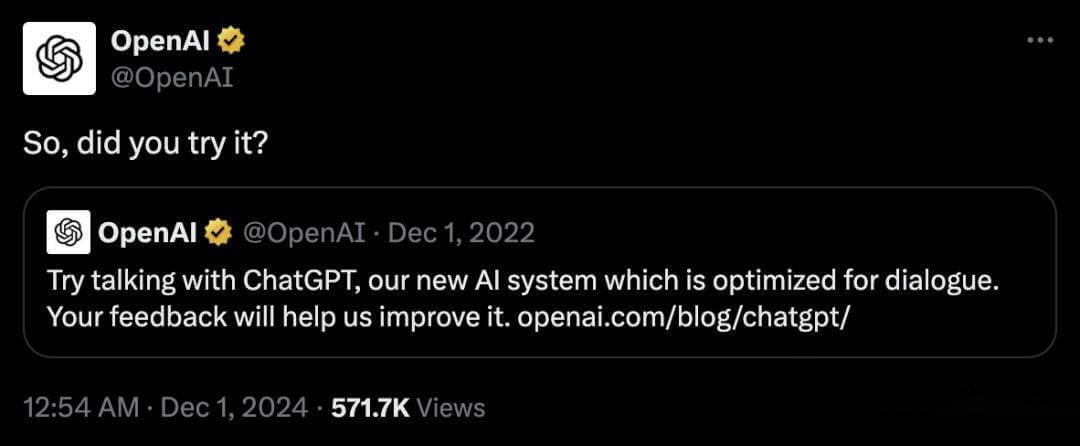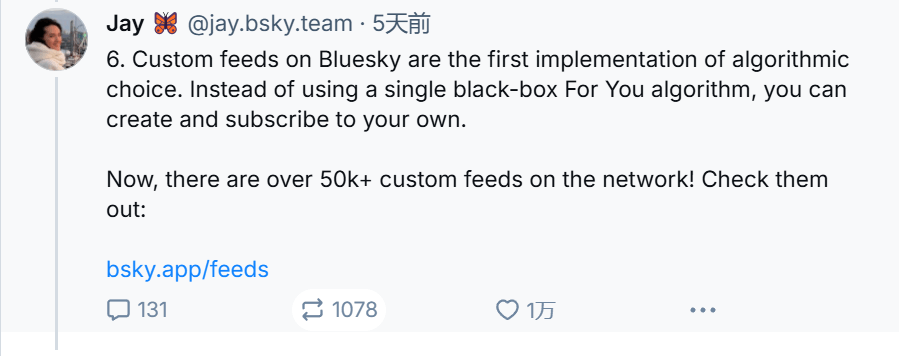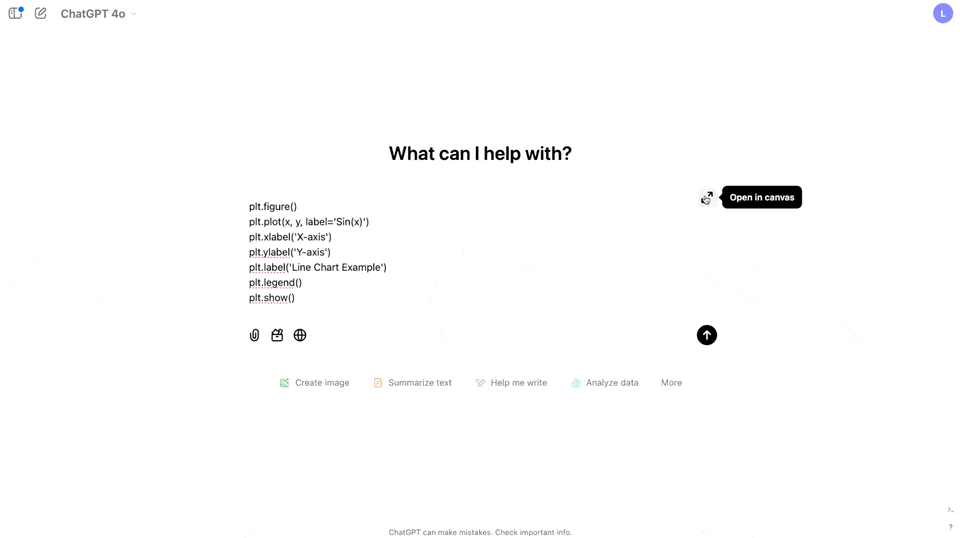Replacing Twitter, This Time It’s for Real.
If you were to name the top two celebrity users of X right now, who would you think of? Trump and Musk might be the most common answers.
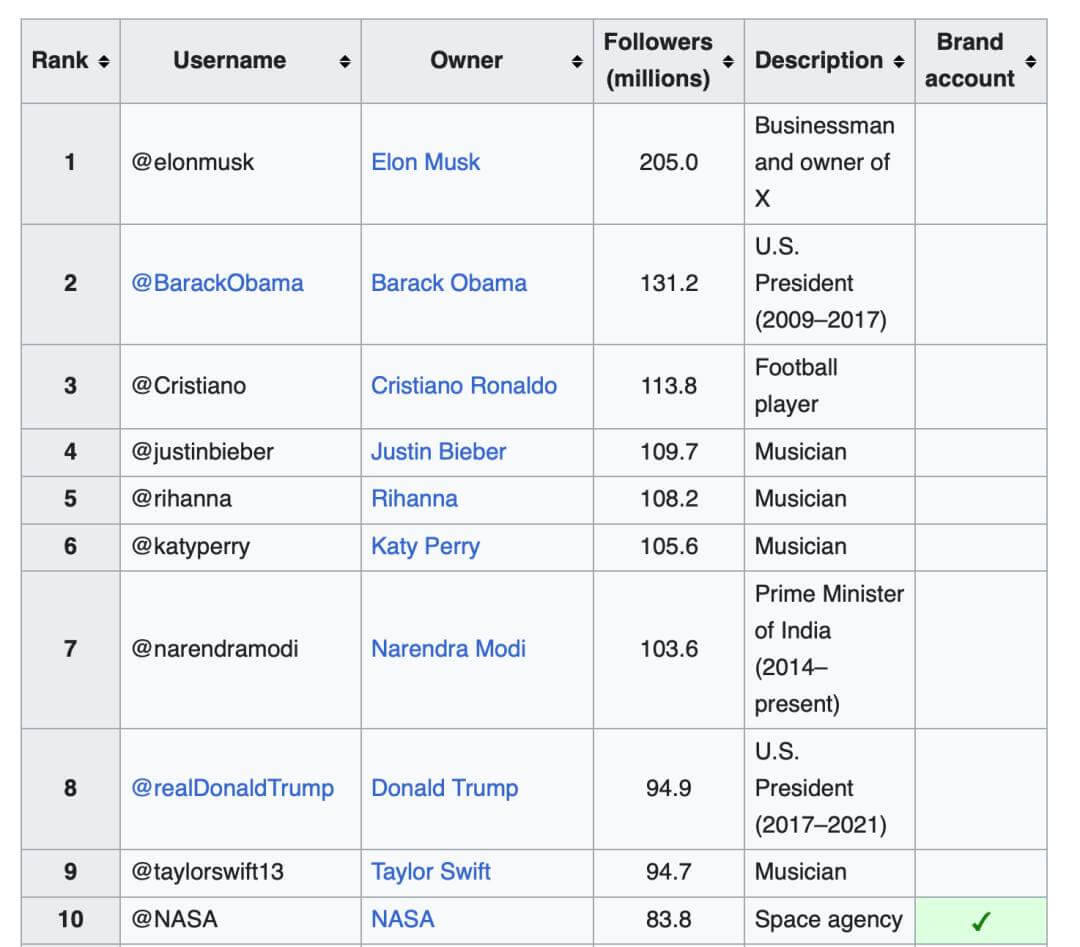
X Follower Rankings: Trump and Musk Are Among the Most Active Users in the Top Ten
When Trump returned to the White House, X and his close buddy Musk played a significant role. Back when Musk was unhappy with the "political correctness" of other social media platforms, and frustrated with Trump's Twitter ban, he acquired Twitter.
After Musk's sweeping changes to X, including renaming, layoffs, subscription services, and other policy shifts, X’s valuation has dropped from the $44 billion it was when Musk acquired it to about $9.4 billion, a decrease of nearly 80%. The company's revenue has also fallen by 84%, and many major advertisers have stopped placing ads on X.
The Scariest Part Is: Users Are Leaving.
X’s global daily active users have decreased by 15%, with U.S. users dropping by 18%. After the U.S. elections, this user loss has accelerated. On the day of the election vote counting, more than 115,000 U.S. users chose to deactivate their X accounts, setting a record since Musk took over.
To possibly mask the user exodus, Musk announced last week that he would hide data related to "likes, comments, and shares" on X. Musk’s rationale? "This makes the interface much cleaner."
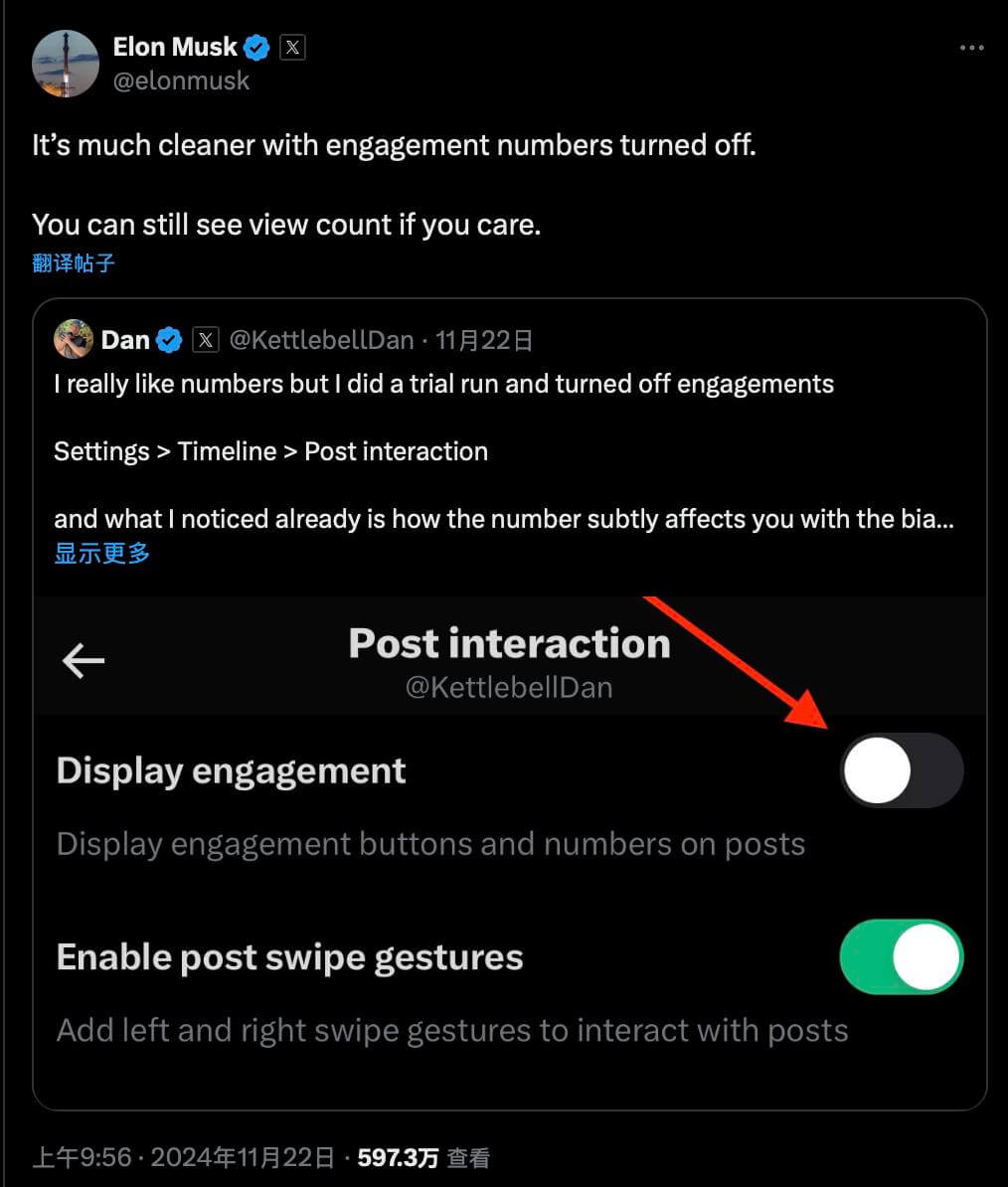
Musk Hides the Numbers of Likes and Other Metrics on X
However, users won’t just disappear; they’ll migrate. One destination for X’s fleeing users is Bluesky.
On the day of the election vote counting, Bluesky attracted about 1.2 million visitors, surpassing Threads, which had 950,000 visitors. On November 14, Bluesky reported 2.5 million new users in the past week, pushing the total user count past 16 million, with daily active users soaring to 3.5 million. By November 19, Bluesky had officially crossed 20 million users, a 300% growth since the election day.
So, what is Bluesky? Is it a "gentler replacement" for X, or just another fleeting social platform, or perhaps the successor to the pre-Musk Twitter?
01. The True Successor to Twitter
When you open Bluesky, you might think you’ve clicked on someone's Twitter profile.
It’s based on the original Twitter model and was born out of Twitter itself, with the initial aim to be an idealized version of Twitter.
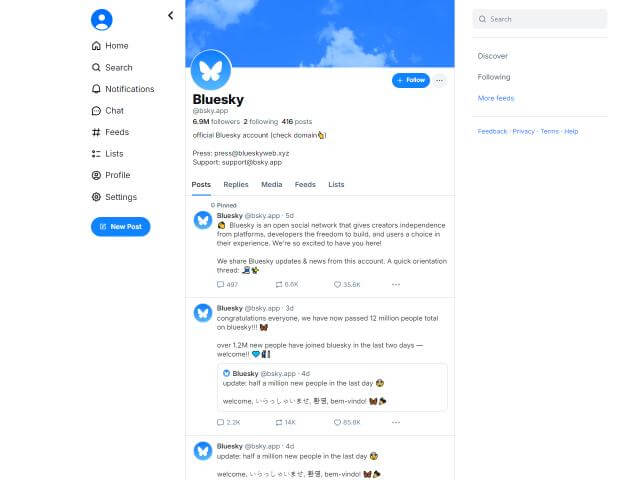
Bluesky’s Interface Looks Very Much Like Twitter
Bluesky was launched in 2019, and its concept was announced by Twitter founder and then-CEO Jack Dorsey, who revealed the Bluesky project. The aim was to create an open and decentralized social media platform standard, with user data security and minimal algorithmic interference in content delivery.
Jack Dorsey had hoped to eventually align Twitter with this decentralized standard.
In 2021, Bluesky separated from Twitter and became an independent company called Bluesky Social. After Musk took over Twitter in 2022, Bluesky severed all legal and financial ties with Twitter and accelerated its app development.
Bluesky’s mission was to create a decentralized social media technical standard. After 2022, their goal was to directly become a decentralized version of Twitter.
Bluesky officially opened registration in February 2023, and within just ten months, it accumulated 20 million users, showing explosive growth.
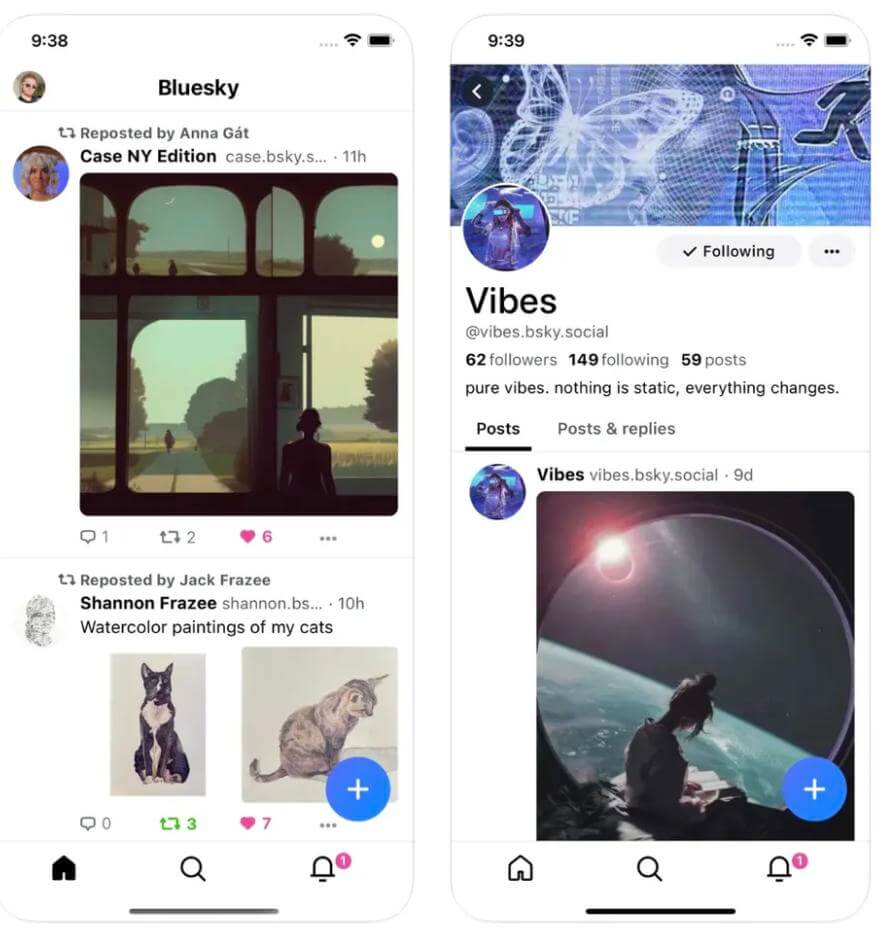
Bluesky’s Interface Is Almost Identical to Twitter’s
Bluesky's format is very similar to Twitter’s. It allows posts of up to 300 characters, including text, images, and videos, and users can reply, retweet, quote, and like posts. Although CEO Jay Graber is opposed to it, Bluesky users have started referring to posts on the platform as “skeets” (Sky + Twitter).
What makes Bluesky even more popular isn’t just its similarity to Twitter but its opposite approach to both technology and content compared to X.
02. What X Opposes, We Embrace
Bluesky’s core technology is the AT Protocol, which allows communication between different social media platforms. This means users can follow and interact with others across different platforms without relying on a single centralized one.
Users can also choose where to store their data—whether on their own server or cloud storage. The AT Protocol ensures that user data isn’t locked into one platform. Even if users decide to leave Bluesky, they can easily take their content and data with them.
In other words, Bluesky eliminates the hassle of switching between multiple apps to refresh your feed, removes concerns about data loss if an account is deleted, and eliminates the migration cost that forces users to stick with a platform they don’t prefer.
Bluesky gives developers the freedom to build their platforms and users the right to leave.
How does X operate? Recently, Musk subtly hinted that X is actively limiting the visibility of posts that include external links. In October 2023, he admitted that “our algorithm optimizes for the time users spend on X, so external links are less emphasized since people leave X if they click on links.”
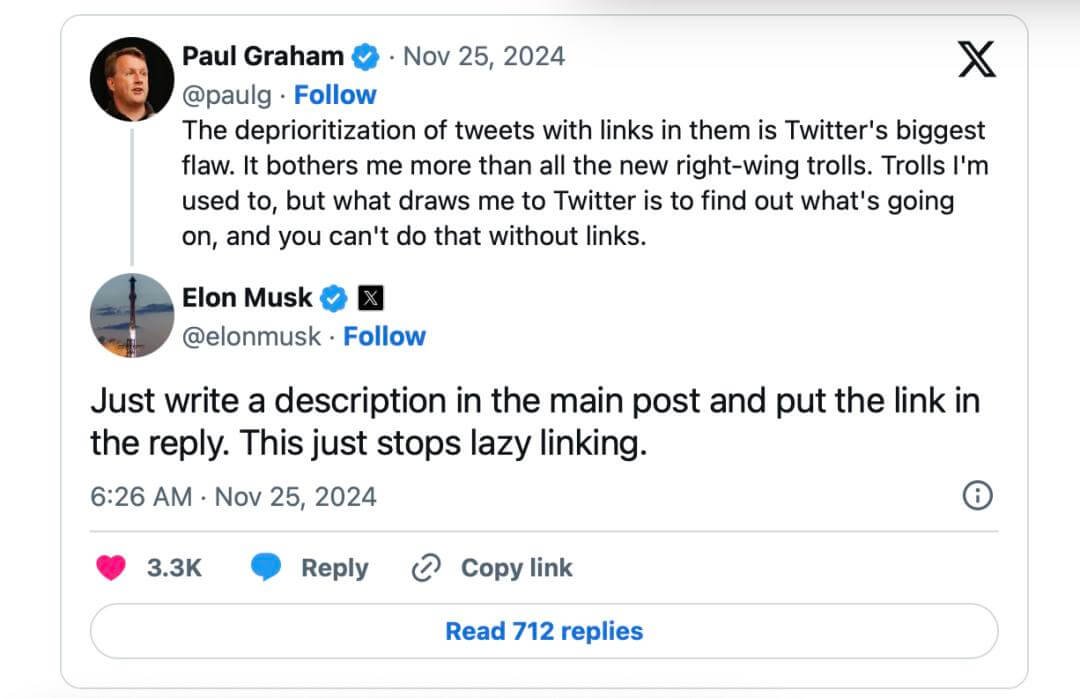
Paul Graham’s Critique on X
In January 2023, X officially disabled third-party clients, ending many popular third-party Twitter applications. In February, X also canceled its free API, and on October 30, it raised the minimum price of its API plan from $100 to $200.
These blocking operations are part of Musk’s effort to keep users, data, and money within X, but the real outcome is that all three are leaving.
Today, X, once Twitter, and Bluesky, which originated from Twitter, seem like two icons of competing platforms—one centralized and sharply defined (X), and the other decentralized and free-spirited (Bluesky).
03. How Will Bluesky Make Money? A Fleeting Phenomenon?
Bluesky is not the first social platform to challenge X. Previously reported platforms like "noplace," a social app for Gen Z, aimed to be the younger version of Twitter, but quickly faded after a brief burst of popularity.
While new social media platforms continue to emerge, the reality is that Meta and X remain dominant.
However, Bluesky is different. It was born from the core Twitter team, inherits Twitter’s content format, and innovates in technology. It stands for decentralization, diversity, free speech, and data freedom, addressing years of dissatisfaction with social media: closed systems, algorithms, echo chambers, and online harassment.
In today’s digital landscape, Bluesky feels idealistic, almost perfect.
But the question remains: how can ideals be sustained? How can Bluesky avoid becoming another Twitter that fades after being bought out?
Perhaps learning from the past, Bluesky has already made structural changes different from other tech companies.
In 2019, Bluesky received $13 million in funding from Twitter for development, and by 2022, it had become independent under the name Bluesky Social. Bluesky Social was later restructured as a "public interest corporation," meaning it is allowed to use its profits for public benefit without the obligation to maximize profits or shareholder value.
As of late October 2024, Bluesky’s operational funding mainly comes from investors and venture capital. On October 24, Bluesky announced that it had raised $15 million in Series A funding.

Bluesky CEO Jay Graber
Bluesky’s commercialization strategy involves sticking to its open platform. They are focusing on their self-developed AT Protocol, such as selling custom domains to users, and licensing the AT Protocol to other apps for royalties.
Bluesky is also considering paid subscription services, such as high-definition video access, more customizable profiles, and peer-to-peer payments for creators to buy digital art, paid articles, code, and tips.
At the moment, as more "Twitter refugees" migrate to Bluesky, Bluesky faces far less financial pressure than server-related challenges.
"Opening Bluesky Feels Like Logging into Twitter 10 Years Ago. It’s Weird, But Friendly. Every User Is Hungry for Knowledge."
Many new users on Bluesky have echoed similar sentiments. Bluesky has also celebrated its Series A funding in a blog post, where they mentioned significant investments in developing anti-harassment and security tools. They have launched features like custom content summaries, open-sourced moderation tools (Ozone), and started selling custom domains.
It looks like Bluesky’s future is steadily on track, with clear skies ahead.

"Twitter Refugees" Flock to the "New King"
At the end of the blog post, they wrote: "Traditional social media companies have closed public data, shut off their APIs, and cut off the livelihood of independent developers, deploying opaque algorithms we can’t predict. This old era of social media is over—at Bluesky, we return the choice and power to you."
Bluesky, with its old-school internet spirit, has arrived at a time when AI is enabling fake news, extreme views, and chaos. Whether it can maintain its ideals, whether it can shake Meta and X to their core, they have created new rules and are showing what the internet and social media should look like.
The world desperately needs a social media platform like this.

